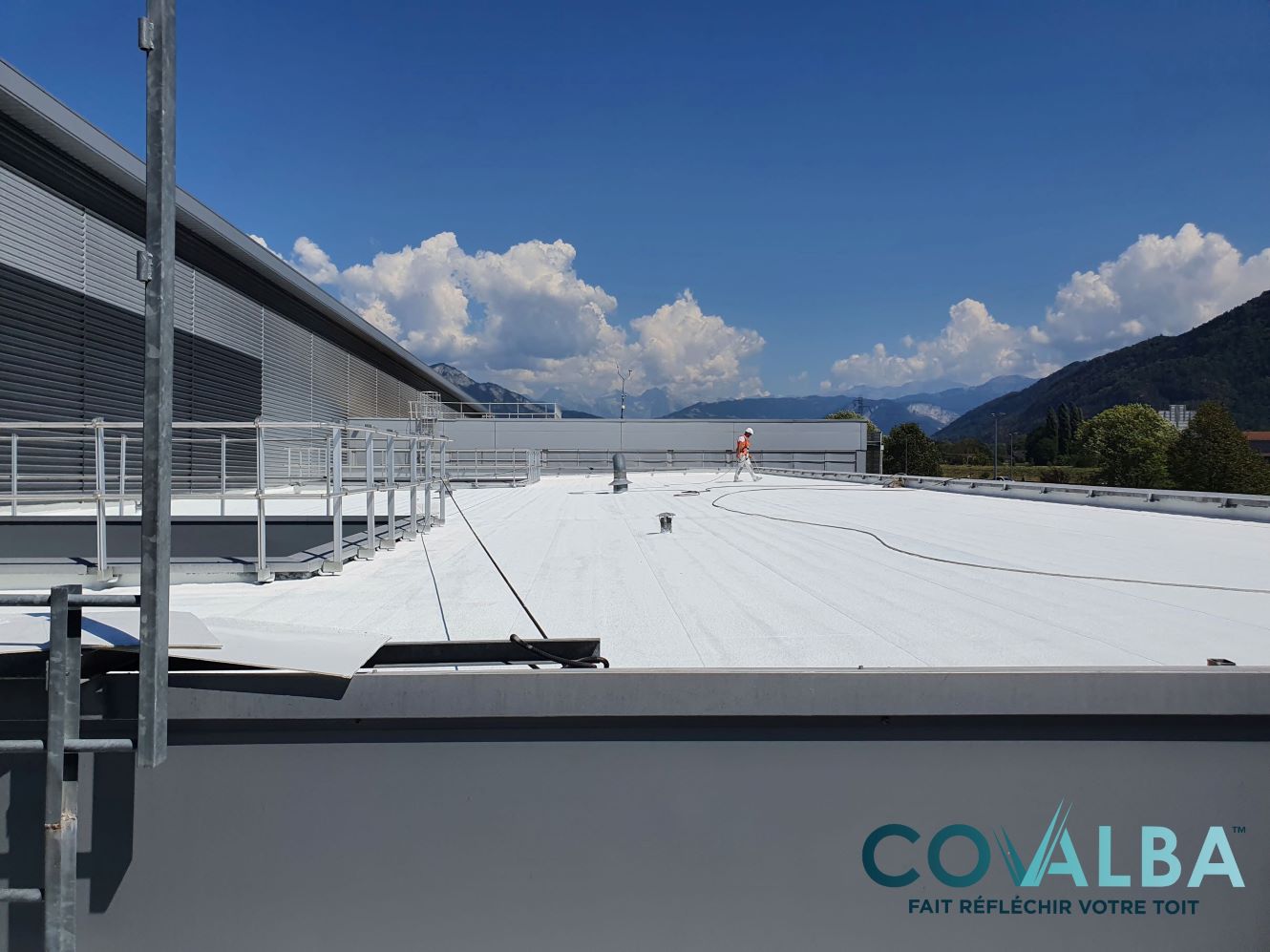Who hasn't found themselves puzzled by the similarity of technical terms, especially when it comes to sustainable and eco-responsible building materials?
Formulas such as Solar Reflectance Coefficient (SR) and Solar Reflectivity Index (SRI) raise questions. Although they are often used interchangeably, they have distinct meanings. This is all the more important as their purpose is to assess the energy efficiency of exterior surfaces. Let's take a look at their differences and their relevance to sustainable construction, and how to use them to make your choice of cladding, particularly for roofing.
Contents
Solar transmission, absorption and reflection: what are they?
To understand the difference between reflectance coefficient and solar reflectivity index, let's take a closer look at the 3 ways in which solar radiation influences temperature rise: transmission, absorption and solar reflection each correspond to the interaction of sunlight with different objects or materials.
☀️La solar transmission
This is the process by which sunlight passes through a material or object without being absorbed or reflected. When sunlight passes through a transparent material such as glass, a large proportion of the light is transmitted.
☀️L solar absorption
This occurs when sunlight is absorbed by a surface. In this case, it is converted into heat. Some materials absorb more sunlight than others, such as dark roofs.
☀️ Solar reflection
This occurs when sunlight bounces off the surface of an object without penetrating or being absorbed. Reflective surfaces, coatings and paints reflect sunlight, or more scientifically speaking: the angle of incidence of light is equal to the angle of reflection.
What is the Solar Reflectance Coefficient?
The Solar Reflectance Coefficient (SR) measures only the amount of solar radiation reflected by a surface. It is expressed as a percentage, from 0 to 100%.
A high level of this indicator shows that a surface effectively reflects the sun's rays, reducing heat absorption in a building. This is one of the great advantages of a white roof, which improves thermal comfort while limiting air-conditioning requirements.
See all our content on cool roof paint and white roofs.
What is the solar reflectivity index (SRI)?
The solar reflectivity index, better known as the SRI index, is used to assess the energy efficiency of an exterior surface. It's the main indicator to check when you buy a material, such as cool roof paint, to protect your building from heat.
Unlike the solar reflectance coefficient, SRI takes into account both :
✅ Solar reflection
✅ And the surface's capacity to emit absorbed heat
Evaluated on a scale of 0 to +100, SRI with higher values indicates a superior ability to reflect heat and maintain a lower temperature.
For these reasons, SRI is a more comprehensive measure of the thermal performance ofa material or coating, as it takes into account both solar reflection and radiative coolingpotential . In other words, the process by which this surface emits energy in the form of electromagnetic radiation in order to achieve a lower temperature.

In short, should we use the SRI or RS coefficient?
The main difference between RS and SRI lies in their assessment of thermal performance:
🥈The RS coefficient focuses exclusively on solar radiation reflection,
🥇The SRI also takes into account heat emission from the surface. As a result, it provides a more comprehensive measure of thermal performance, across the entire spectrum of solar radiation.
👉 Conclusion: a material with a high solar reflectance coefficient can have a high SRI if it efficiently reflects absorbed heat. However, a material with a high RS coefficient can have a lower SRI if it retains absorbed heat but does not emit it sufficiently.
So, if you're looking for a reflective coating for your roof, pay close attention first and foremost to the SRI level indicated on the product. For example, applying white paint to tiles can considerably improve solar reflectivity, while still matching the aesthetics of traditional roofs.

Further information